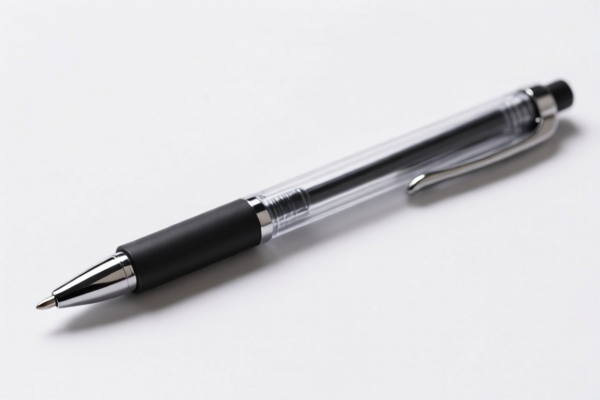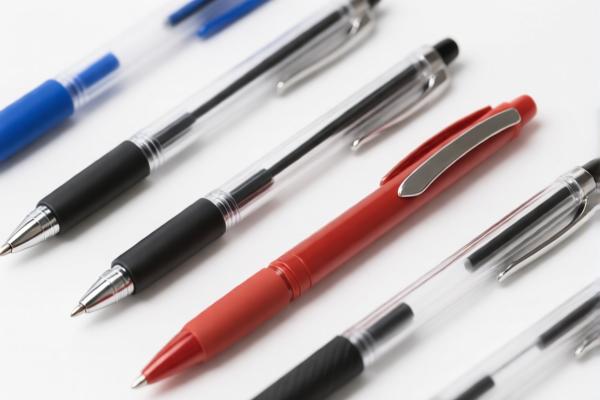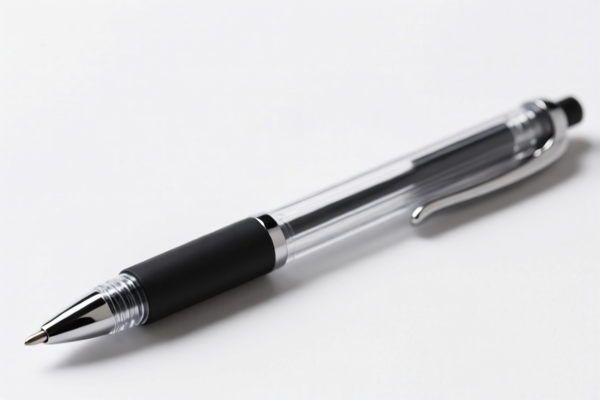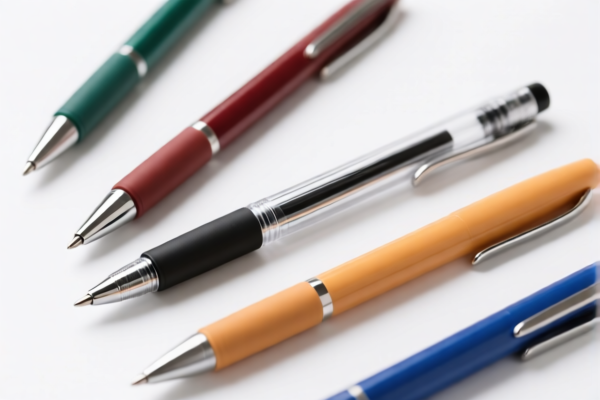| HS Code | Official Doc | Tariff Rate | Origin | Destination | Effective Date |
|---|---|---|---|---|---|
| 9017208040 | Doc | 59.6% | CN | US | 2025-05-12 |
| 9017208080 | Doc | 59.6% | CN | US | 2025-05-12 |
| 3926100000 | Doc | 35.3% | CN | US | 2025-05-12 |
| 3923500000 | Doc | 60.3% | CN | US | 2025-05-12 |
| 3923900080 | Doc | 58.0% | CN | US | 2025-05-12 |




Plastic Rollerball Pen
A plastic rollerball pen is a writing instrument utilizing a small rotating ball to dispense water-based ink onto paper. It is a common and relatively inexpensive type of pen.
Material
The primary component is the pen's body, typically constructed from various plastics including polypropylene, polystyrene, or ABS plastic. Ink reservoirs are commonly made of polypropylene. Metal components are present in the tip assembly (often stainless steel or tungsten carbide for the ballpoint) and sometimes in the clip or decorative elements.
Purpose
The pen is designed for everyday writing tasks, including note-taking, journaling, signing documents, and general office or school use.
Function
Ink flows from a reservoir through a channel to a small ball (typically 0.5–1.2 mm in diameter) located at the pen's tip. As the pen is moved across a writing surface, the ball rotates, transferring ink from the reservoir onto the paper. The water-based ink provides a smoother writing experience compared to ballpoint pens due to its lower viscosity.
Usage Scenarios
- Everyday Writing: Suitable for routine writing tasks at home, school, or the office.
- Note-taking: Commonly used for jotting down quick notes during meetings or lectures.
- Signing Documents: Acceptable for signing non-critical documents.
- General Office Use: Distributed widely in office environments.
- Student Use: A standard writing tool for students of all ages.
Common Types
- Disposable Rollerball Pens: The most common type, designed to be discarded when the ink runs out.
- Refillable Rollerball Pens: Feature a replaceable ink cartridge, offering a more sustainable option.
- Gel Rollerball Pens: Utilize a gel-based ink that provides a more vibrant color and smoother writing experience, though often with a higher price point. The plastic body construction remains common.
- Cap vs. Retractable: Pens may feature a cap to protect the tip when not in use, or a retractable mechanism (click-action) for convenience.
- Ink Color Variations: Available in a wide range of colors, including black, blue, red, green, and purple.
- Barrel Transparency: Barrels can be transparent, allowing the user to monitor ink levels, or opaque for a more traditional look.
The declared goods, a plastic rollerball pen, fall under several potential classifications based on its material and function. Here's a breakdown of relevant HS codes:
- 3926100000: This HS code covers “Other articles of plastics and articles of other materials of headings 3901 to 3914: Office or school supplies”. A plastic rollerball pen, being an office supply, is directly applicable to this classification.
- 3923500000: This HS code refers to “Articles for the conveyance or packing of goods, of plastics; stoppers, lids, caps and other closures: Stoppers, lids, caps and other closures”. If the pen includes a plastic cap or closure, this code may be relevant.
- 3923900080: This HS code covers “Articles for the conveyance or packing of goods, of plastics; stoppers, lids, caps and other closures, of plastics: Other Other”. This is a broader classification for other plastic articles related to packaging or closures, and could apply to components of the pen beyond a simple cap.
HS Code Breakdown:
- 39: This chapter covers plastics and articles thereof.
- 26: This heading specifically covers other articles of plastics, including office or school supplies.
- 10: This subheading further defines the articles as office or school supplies.
- 39: Again, this chapter covers plastics and articles thereof.
- 23: This heading covers articles for the conveyance or packing of goods, of plastics.
- 50: This subheading specifically covers stoppers, lids, caps and other closures.
- 90: This subheading covers other plastic articles related to packaging or closures.
Tax Rate Information:
- 3926100000: Has a base tariff of 5.3%, a surcharge of 0.0%, and a tariff of 30% after April 2, 2025, resulting in a total tariff of 35.3%.
- 3923500000: Has a base tariff of 5.3%, a surcharge of 25.0%, and a tariff of 30% after April 2, 2025, resulting in a total tariff of 60.3%.
- 3923900080: Has a base tariff of 3.0%, a surcharge of 25.0%, and a tariff of 30% after April 2, 2025, resulting in a total tariff of 58.0%.
Customer Reviews
No reviews yet.